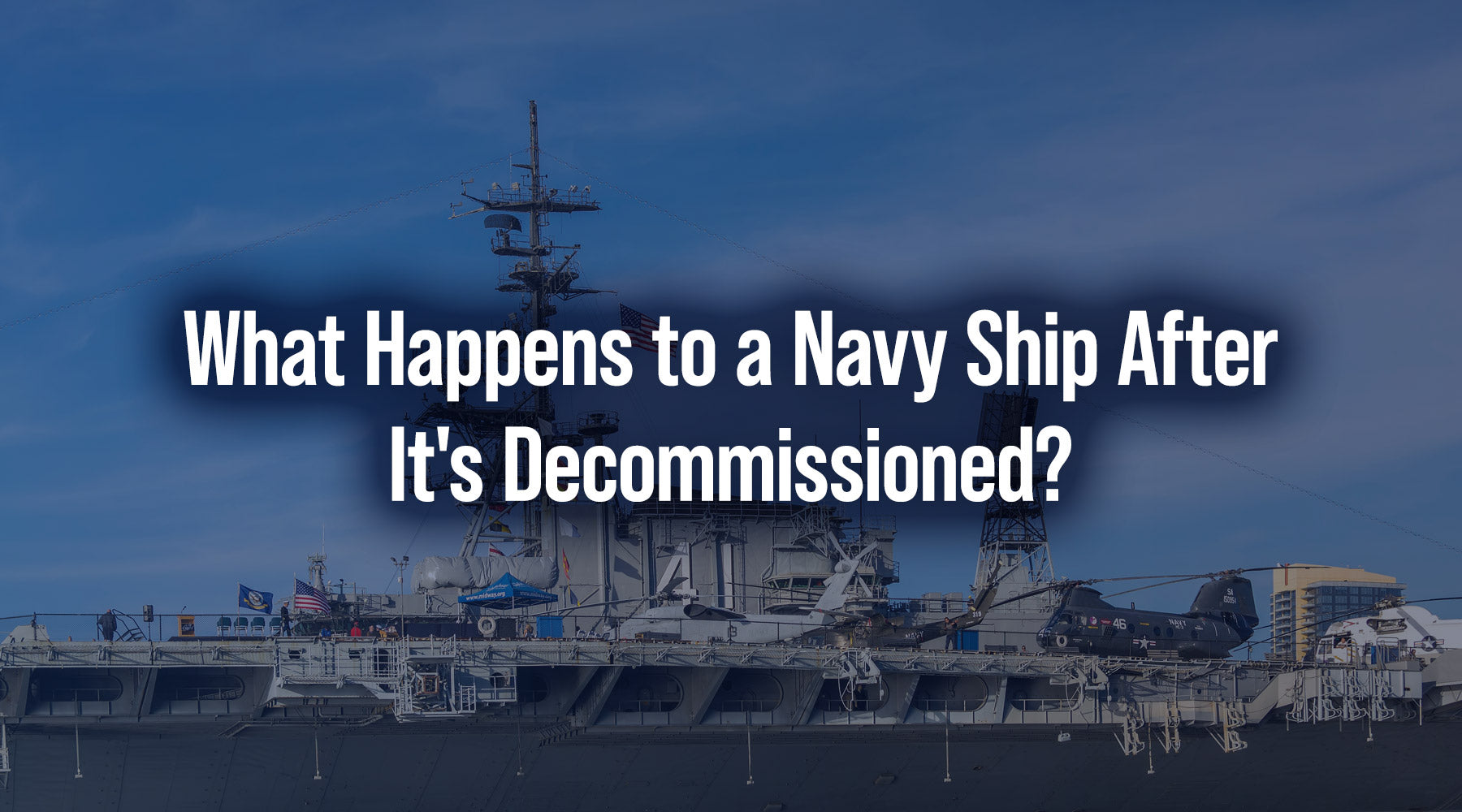
What Happens to a Navy Ship After It's Decommissioned?
For most Navy ships, the end of active duty is just the beginning of a whole new story. After decades of serving in operations across the globe, carrying Sailors through stormy seas and calm waters alike, these steel giants are eventually retired. But they don’t just vanish. Instead, they enter a phase of life that’s lesser known, but no less fascinating.
So what really happens when a Navy ship is decommissioned?
Let’s break it down.
The Decommissioning Process: End of Watch
Decommissioning a Navy ship is a formal event. The ship’s crew performs a final ceremony, lowering the American flag and officially taking the vessel out of active service. It’s a moment filled with history, emotion, and pride. For many Sailors, it marks the end of a chapter they’ll never forget. If you’ve read our post about “I-Day: The First Step Toward Greatness”, you know just how much emotional weight is tied to beginnings in the Navy. The same goes for endings.
Once the decommissioning ceremony concludes, the ship is no longer considered part of the active fleet. From there, several paths await, each telling a different kind of story.
1. Museum Ships: Preserving Naval History
Some ships are deemed too iconic to be forgotten. Instead of being scrapped, they’re preserved and turned into museum ships, allowing the public to step aboard and walk the same decks where history was made. The USS Midway in San Diego and the USS Intrepid in New York City are just two well-known examples.
These ships become floating classrooms, teaching future generations about naval power, service, and sacrifice. For veterans, they are sacred ground. Standing on those decks again can bring back a flood of memories: the camaraderie, the missions, the adrenaline, and the sense of duty.
2. Artificial Reefs: Giving Back to the Sea
Some decommissioned ships are sent back to the sea in a new form, as artificial reefs. Carefully cleaned and environmentally prepped, these ships are intentionally sunk to create habitats for marine life.
The USS Oriskany, a retired aircraft carrier, was sunk off the coast of Florida in 2006 and has since become a haven for fish, coral, and divers. It’s poetic in a way. After years of serving on the ocean’s surface, these vessels continue to serve beneath it, nurturing life and adventure.
3. Sold or Transferred to Allied Navies
Not all decommissioned ships stay within U.S. borders. Some are transferred or sold to allied navies across the globe. This continues their legacy in a new uniform, supporting partnerships and strengthening international ties.
For example, the USS Taylor (FFG-50) was transferred to Taiwan, and the USS Gary (FFG-51) was sold to the Mexican Navy. These ships still sail under a different flag, representing continued cooperation between nations.
4. Scrapped for Parts and Metal
For ships that are too old, too damaged, or no longer cost-effective to maintain, scrapping becomes their final duty. These vessels are dismantled, and their parts are either sold or recycled. While it may not sound glamorous, this process allows components to live on in other ships or industries.
Everything from radar systems to piping, metal hull plates, and wiring may be repurposed. This path isn’t about letting go, it’s about passing on value, function, and purpose.
5. Used for Target Practice and Weapons Testing
A few ships meet their end in live-fire exercises, serving one final mission. The Navy uses these vessels to test weapons systems in real-world conditions, providing invaluable data and training for active forces.
Called SINKEX (Sink Exercises), these events are controlled and conducted far from commercial traffic and with environmental protocols in place. It’s a dramatic, fiery farewell that reminds us these ships were built to take, and deliver, a hit.
A Ship’s Legacy Lives On
Regardless of the path a ship takes after decommissioning, its legacy lives on. Whether it becomes a museum, a reef, or part of another nation’s navy, every bolt and beam carries the stories of the Sailors who served aboard.
Those stories matter. Just like we explored in “The Sailors Who Arm the Fleet”, every job in the Navy supports a greater mission.
The same goes for the cutting-edge ships of today, like those featured in our article on how modern tech is transforming the Navy. One day, they too will face retirement, and their futures will hold just as many fascinating possibilities.
If you love naval history and ship design, check out our full U.S. Navy Ships Collection. Each piece pays tribute to the ships that define American sea power, from destroyers and carriers to submarines and legendary cruisers.






Comments
Leave a comment